Das Bundesministerium fuer Bildung und Forschung (BMBF) moechte die Anwendung von Quantentechnologien in der Informationstechnik vorantreiben. Dazu hat es jetzt rund 13 Millionen Euro fuer insgesamt vier Verbundprojekte zur Verfuegung gestellt.
Nov 25th, 2010
Read more
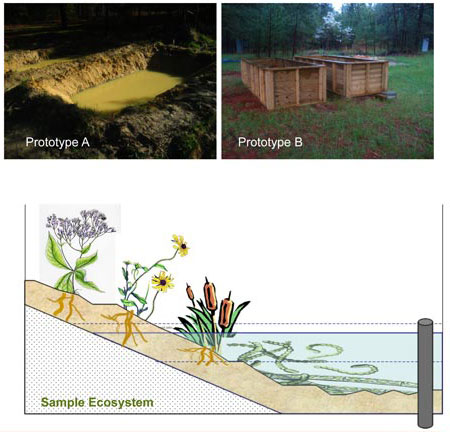 32 alternate realms, known as mesocosms, house individual types of nanoparticles as part of a research effort conducted by the Center for the Environmental Implications of Nano Technology (CEINT) based at Duke University.
32 alternate realms, known as mesocosms, house individual types of nanoparticles as part of a research effort conducted by the Center for the Environmental Implications of Nano Technology (CEINT) based at Duke University.
Nov 25th, 2010
Read more
A research team led by the Carnegie Institution's Department of Plant Biology developed a novel trick for identifying how pathogens hijack plant nutrients to take over the organism. They discovered a novel family of pores that transport sugar out of the plant.
Nov 25th, 2010
Read more
The prestigious Business Innovation Awards 2010, which showcases the very best of UK innovation in science and technology, has announced the nine companies shortlisted for its three award categories for 2010 - emerging + nanotechnology, energy + environment, and digital connected world.
Nov 25th, 2010
Read more
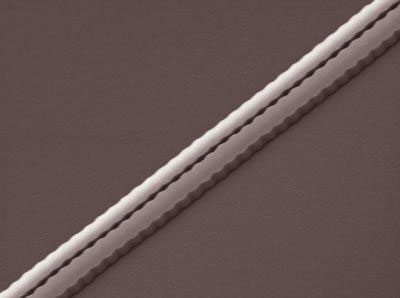 University of California - San Diego electrical engineers developed ultra compact, low power pulse compressor on a silicon chip.
University of California - San Diego electrical engineers developed ultra compact, low power pulse compressor on a silicon chip.
Nov 24th, 2010
Read more
Physicists from the University of Bonn have developed a completely new source of light, a so-called Bose-Einstein condensate consisting of photons. Until recently, expert had thought this impossible. This method may potentially be suitable for designing novel light sources resembling lasers that work in the x-ray range. Among other applications, they might allow building more powerful computer chips.
Nov 24th, 2010
Read more
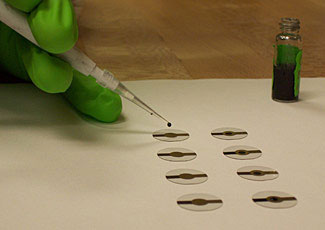 A new chemical analysis technique developed by a research group at the National Institute of Standards and Technology (NIST) uses the shifting ultrasonic pitch of a small quartz crystal to test the purity of only a few micrograms of material.
A new chemical analysis technique developed by a research group at the National Institute of Standards and Technology (NIST) uses the shifting ultrasonic pitch of a small quartz crystal to test the purity of only a few micrograms of material.
Nov 24th, 2010
Read more
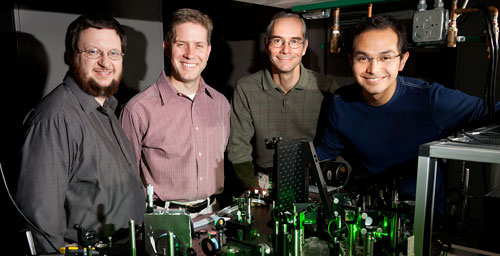 The long, anxious wait for biopsy results could soon be over, thanks to a tissue-imaging technique developed at the University of Illinois.
The long, anxious wait for biopsy results could soon be over, thanks to a tissue-imaging technique developed at the University of Illinois.
Nov 24th, 2010
Read more
The Center for International Environmental Law and the European Environmental Bureau submitted proposals today to the European Commission for a definition of the term 'nanomaterials'. Supported by over 40 organizations from 22 countries on five continents, CIEL and EEB prepared their proposal as part of a public consultation on the European Commission's draft definition.
Nov 24th, 2010
Read more
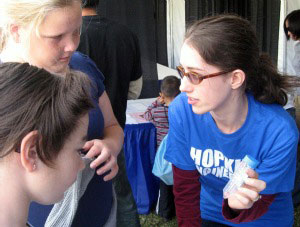 The scene was a sea of white tents spread across the National Mall in Washington, DC and science and engineering were the order of the day. That's what greeted visitors to the booth hosted by Johns Hopkins Institute for NanoBioTechnology at the first USA Science and Engineering Festival Expo.
The scene was a sea of white tents spread across the National Mall in Washington, DC and science and engineering were the order of the day. That's what greeted visitors to the booth hosted by Johns Hopkins Institute for NanoBioTechnology at the first USA Science and Engineering Festival Expo.
Nov 24th, 2010
Read more
Phantoms Foundation, CIC nanoGUNE, DIPC, University of Basque Country and Bilbao Exhibition Centre will host the first edition of ImagineNano event from 11th until 14th of April in the North of Spain, Bilbao.
Nov 24th, 2010
Read more
One of the best quantum simulators consists of a gas of extremely cold atoms loaded in an artificial crystal made of light: an optical lattice. Experimental physicists have developed efficient techniques to control the quantum properties of this system, to such extent, that it serves as an ideal quantum simulator of different phenomena.
Nov 24th, 2010
Read more
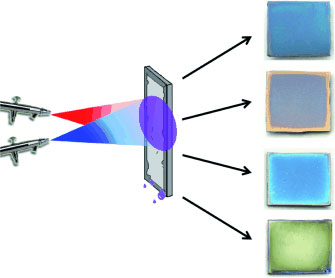 Researchers have introduced a new process for the production of ultrathin coatings that is especially simple, versatile, and suitable for large-scale processes.
Researchers have introduced a new process for the production of ultrathin coatings that is especially simple, versatile, and suitable for large-scale processes.
Nov 24th, 2010
Read more
With the aid of science video communication charity, The Vega Science Trust , COST Action MP0901 'NanoTP' has produced two short videos explaining graphene and its amazing properties.
Nov 24th, 2010
Read more
The International Council of Chemical Associations (ICCA) has released a document addressing key issues that need to addressed when considering the definition of manufactured nanomaterials for regulatory purposes. It advocates five 'Core Elements of a Regulatory Definition of Manufactured Nanomaterial'.
Nov 24th, 2010
Read more
Researchers have devised a predictive model that combines laboratory studies of microscopic glass particles in solution with mathematical theories to predict the existence, thickness and length of the banded ring patterns that formed.
Nov 24th, 2010
Read more







 Subscribe to our Nanotechnology News feed
Subscribe to our Nanotechnology News feed